Walkthrough
Typophoto in Moholy-Nagy’s Painting, Photography, Film
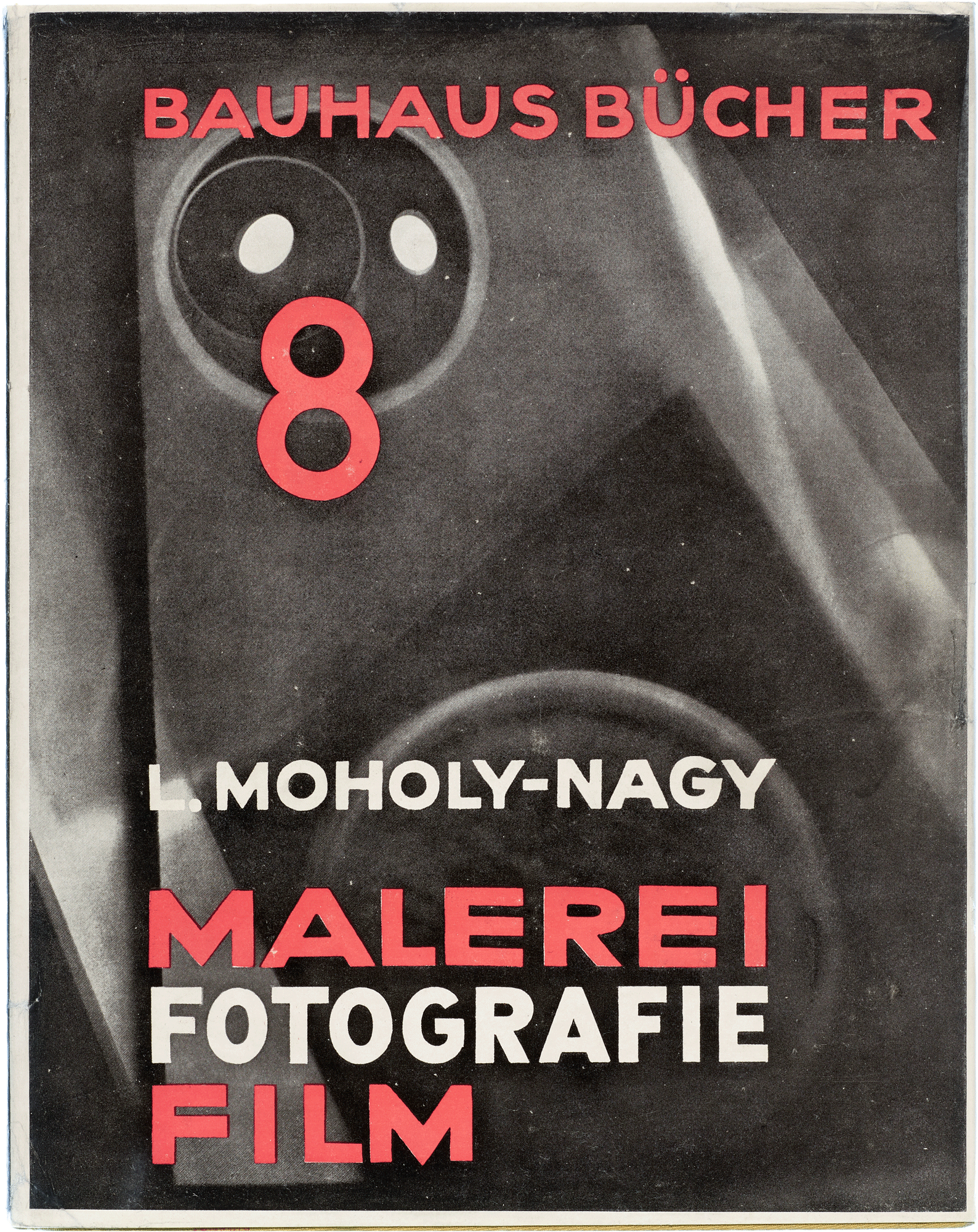
László Moholy-Nagy applied his typographic techniques to all the Bauhausbücher that he designed, but in the titles he authored for the series, such as Painting, Photography, Film (Malerei, Fotographie, Film), which he wrote with his wife at the time, Lucia Moholy, he gave them full expression.
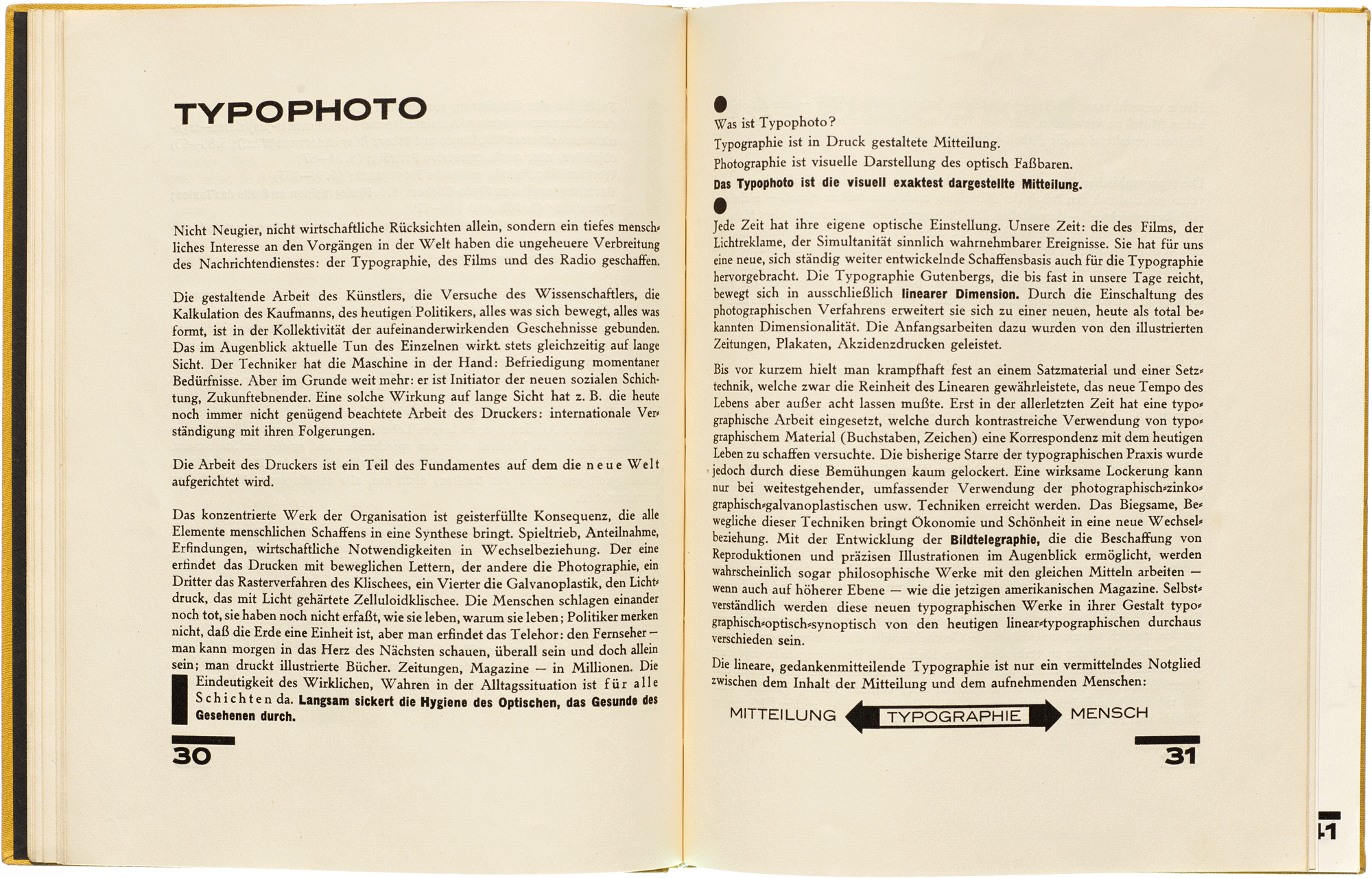
Here, he uses bold type liberally for emphasis and, for passages requiring even more attention, institutes a heavy rule on the left margin to indent the text. Bold circles punctuate section breaks; smaller ones mark footnotes.
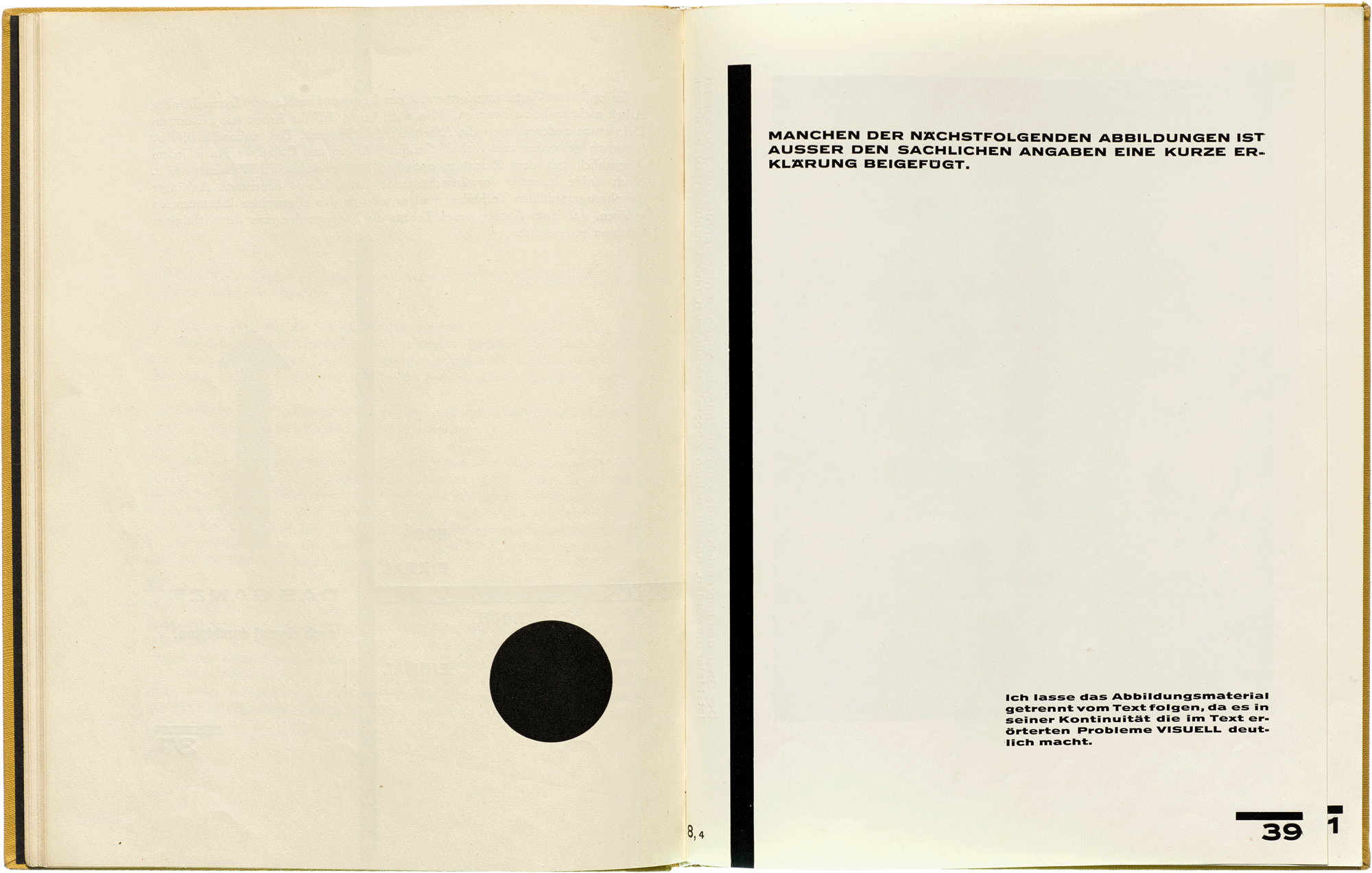
While not jarring today, the inclusion of painting alongside photography and film in the title would have struck readers as provocative, even scandalous. However, Moholy-Nagy’s intention was not to debase painting but rather to elevate photography and film to the same level of artistic consideration.
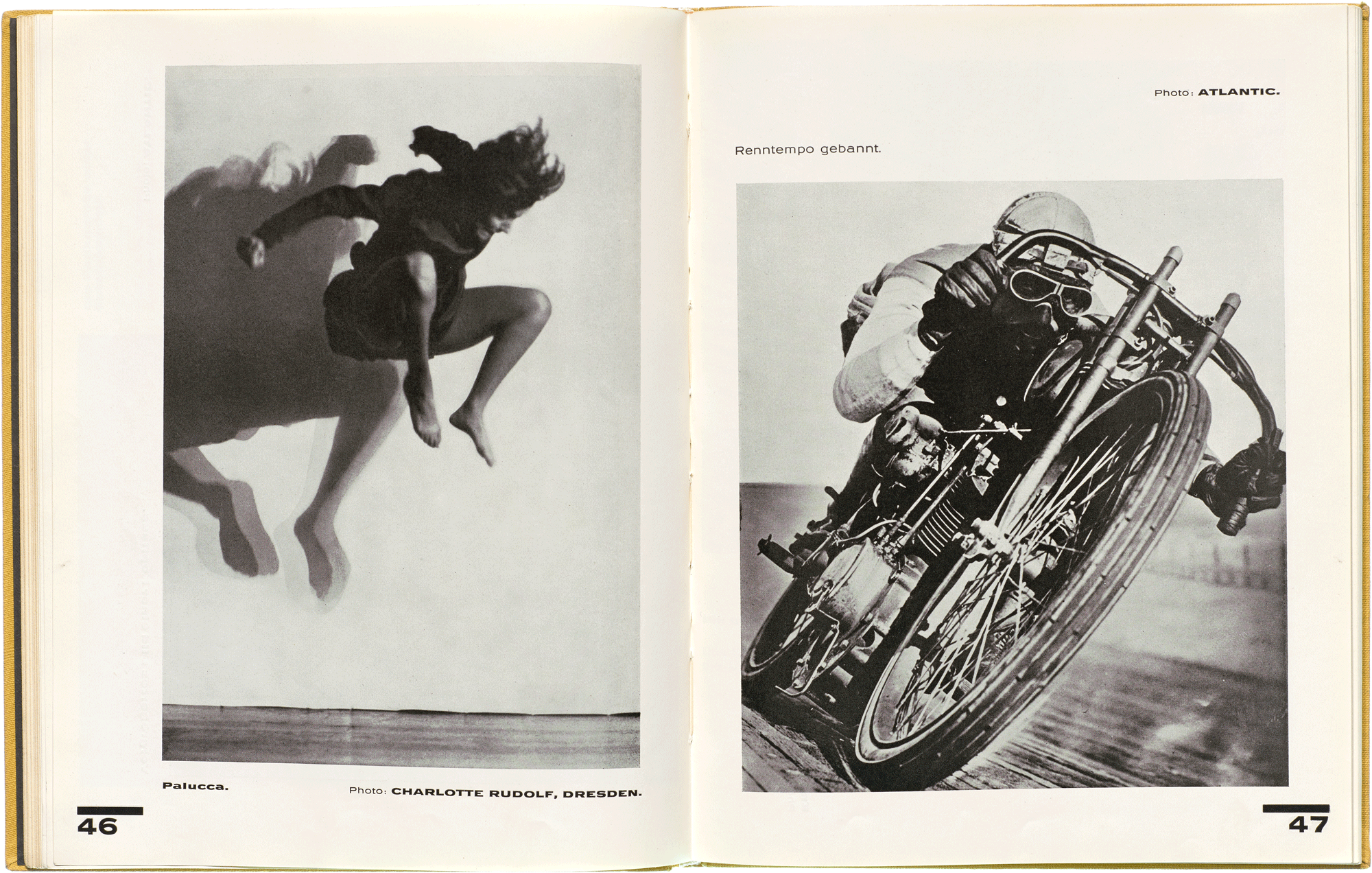
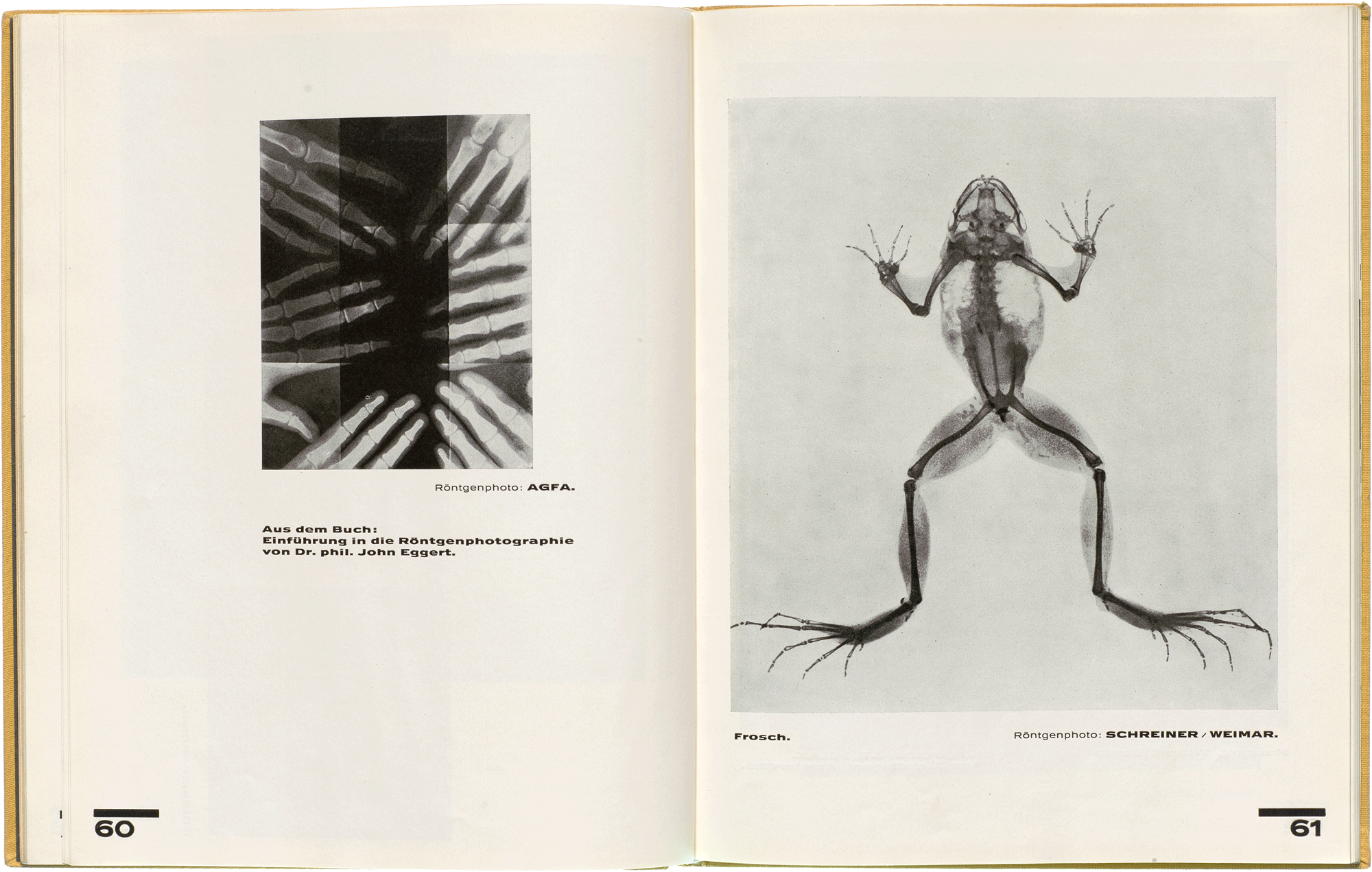
The book’s most famous section is likely the “Dynamic of the Metropolis,” described as a “sketch of a manuscript for a film.” It is an example of typophoto, a term invented by Moholy-Nagy to describe “the visually most exact rendering of communication,” accomplished by synthesizing typography and photography in hybrid compositions.

This chapter-as-storyboard runs over several pages in a dynamic montage of typography, photography, and symbols, cut together with Moholy-Nagy’s signature bold rules.
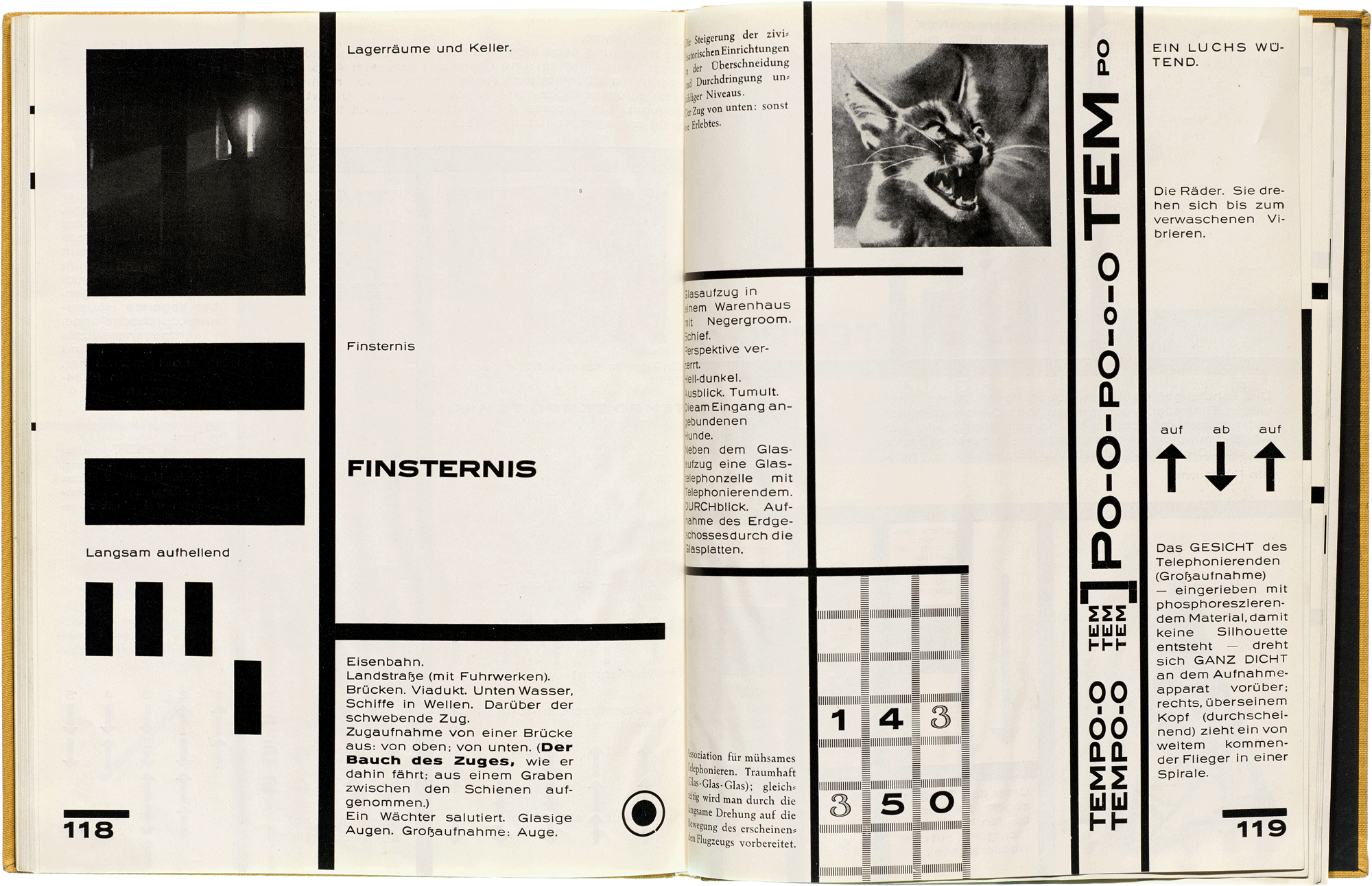
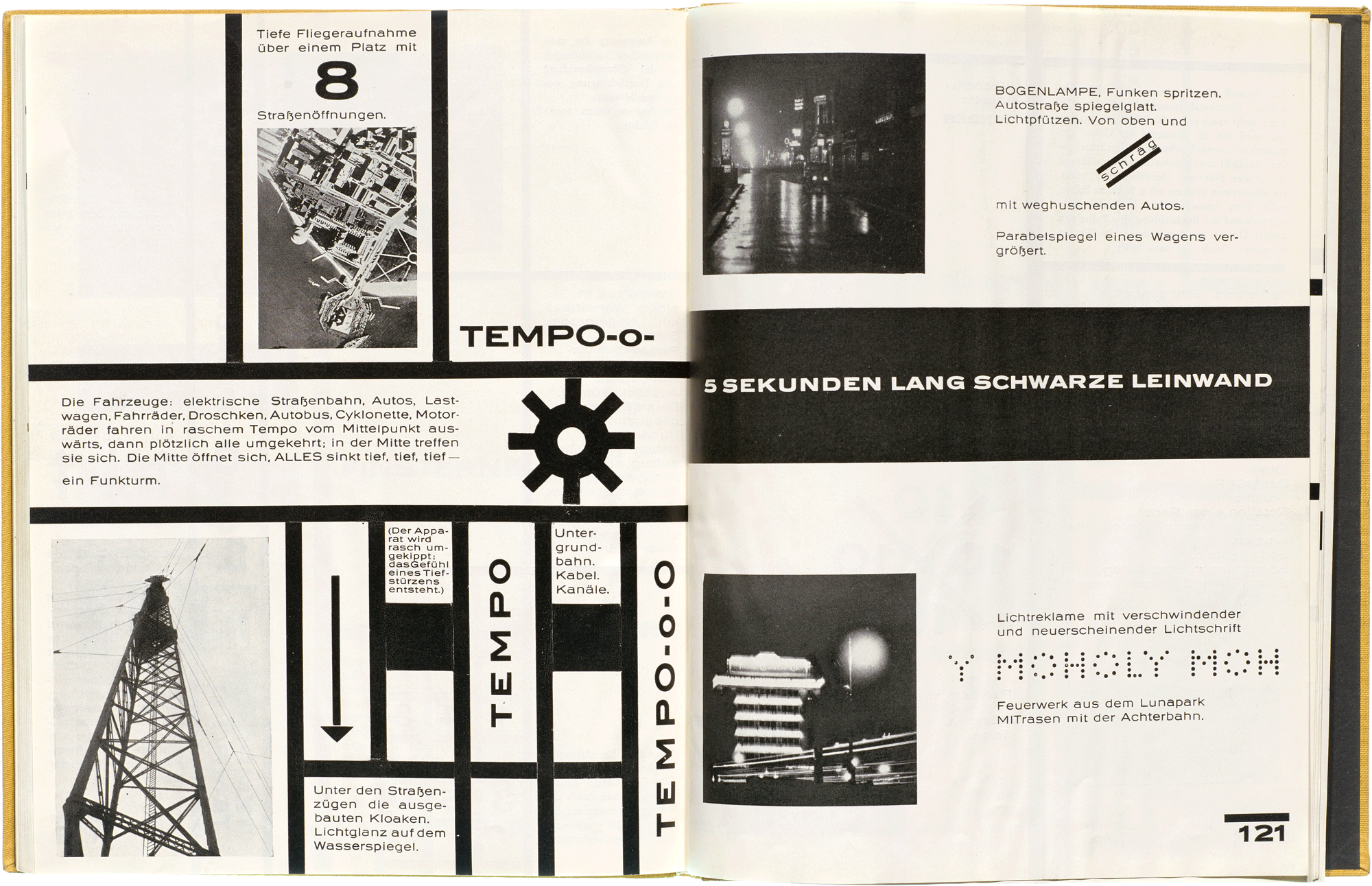
The operative concept is tempo, a word that appears throughout to characterize the variable pacing and filmic quality of the reading experience. It is Moholy-Nagy’s definitive experiment in what the new typography can achieve.
More Walkthroughs
Explore the exhibition through video, interviews, and interactive tours of selected objects.
More walkthroughs are coming soon. Sign up to be notified.
For much more background and historical context on the material featured in this exhibition, get the catalog.